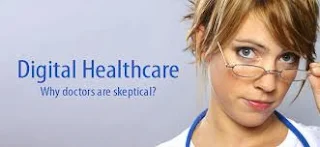
Attribution given to Bryan Vartabedian, MD
How does a hospital or provider move into the digital space ? And what part of the space should you participate ?
Are you a part of it, and do you want to be a part of it? Is this a necessity, or just a fad ?
Do you have an overall marketing plan, or separate department for marketing?
You will need to assess your reasons for HIT and social media. Electronic Health Records, Health Information Exchanges, mHealth, social media, all serve different needs, some elective and some necessary.
An important component is time and money, neither of which are an infinite resource. Given the current massive health reform that is being legislated practice resources must be aligned with regulatory mandates.
Reality plays a big role. Many social media users do it for pure enjoyment as a break from conventional routines of their day. Some do it for making new contacts, social or medical, based on current interests. Others look for new vistas, hobbies, and activities one would never entertain,unless in the process of social media it happens spontaneously. Some social media hobbyists transition into a vocation in marketing, education, or entertainment.
Your regional social media politically correct standards may play a role in your decision making. Social media is just that…….voluntary. Let’s compare social events such as medical staff meetings, part business, part pleasure, and a source of much information and communication. If you think about your daily activities, meetings, learning experiences, creative thinking can create reasons for using social media.
You may want to expand your visibility either locally, regionally, nationally, or internationally.
There are choices:
1. Do it yourself. This requires significant time and effort as well as a learning curve to
do it efficiently. There are many who are willing and able to teach you, some for free, and
others who charge a fee. One example is the Social Media Residency offered by Lee
Aase and the Mayo Clinic.
2.Hire someone or a professional digital marketer to do it for you. Since you are in
the business of medicine, highly skilled and have a relatively high ability to generate
income. Why bother yourself with these tasks.
There are innumerable online companies offering software products to encompass
a marketing plan.
3. Like Real Estate the main concern is ‘location, location, location. So too is social
media. Your choices and perhaps limitations will depend on where you practice ?
Factors such as the form of your medical practice, solo,group, specialty, or academic
will more than influence your options. Listen to this story from “33 Charts”, a well known
blog.
 DECEMBER 14, 2013Albert Flexner, M.D. (courtesy, National Library of Medicine)
DECEMBER 14, 2013Albert Flexner, M.D. (courtesy, National Library of Medicine)
Last year was part of a small group charged with building a social media toolkit for medical schools. An early conference call participant made it clear that if the project didn’t meet certain criteria for academic advancement, he’d be unable to participate. It was the last time we heard from him. Unfortunate but predictable.
There is a movement to qualify and/or quantify social media publishing by clinicians and scientists. In an article published on iMedicalApps, one pharmacist had this to say about this prospect,
What counts is what brings value
New forms of knowledge creation and how they fit into a dated system of promotion is a growing preoccupation for many physicians. And the question of what should ‘count’ toward academic advancement is one that’s received attention lately. Some have approached advancement committees to have their blogs recognized as evidence of scholarship. I haven’t decided whether these attempts are noble or laughable.
What counts is what brings value. And what brings value in medicine are cameos in peer-reviewed publications. This makes sense. Because in the era of analog medicine, this was the only means by which physicians communicated ideas and findings. Appearance in this 17th century tool of idea transmission has defined leadership through most of medical history.
Embedded habits are slowly eroded, as better solutions appear.
The age of networked intelligence will spawn a new kind of leader
But things have changed and doctors have new ways to share ideas and change minds. Now every doctor, independent of institutional affiliation, tenure, pedigree or lineage is empowered with the capacity to grow, share and develop ideas.
And so the age of networked intelligence will spawn a new type of leader. Expect to see regular doctors emerge as influential not based on lists of publications but on the strength and novelty of their ideas. Leadership will be determined in part by the capacity to leverage new tools to build, communicate and influence.
But don’t expect them to be promoted. For now.
Think much, publish little
Despite how we connect and communicate, peer-reviewed research will remain an important element in the advancement of medicine. But it represents only one way to lead. For those early in their career, there are some things you can do.
Perhaps we should think more before we publish our blogs, tweet or build facebook and/or google pages. (or at least make our posts less often, and shorter.
Thanks to Dr. Vartabedian for his insights.









